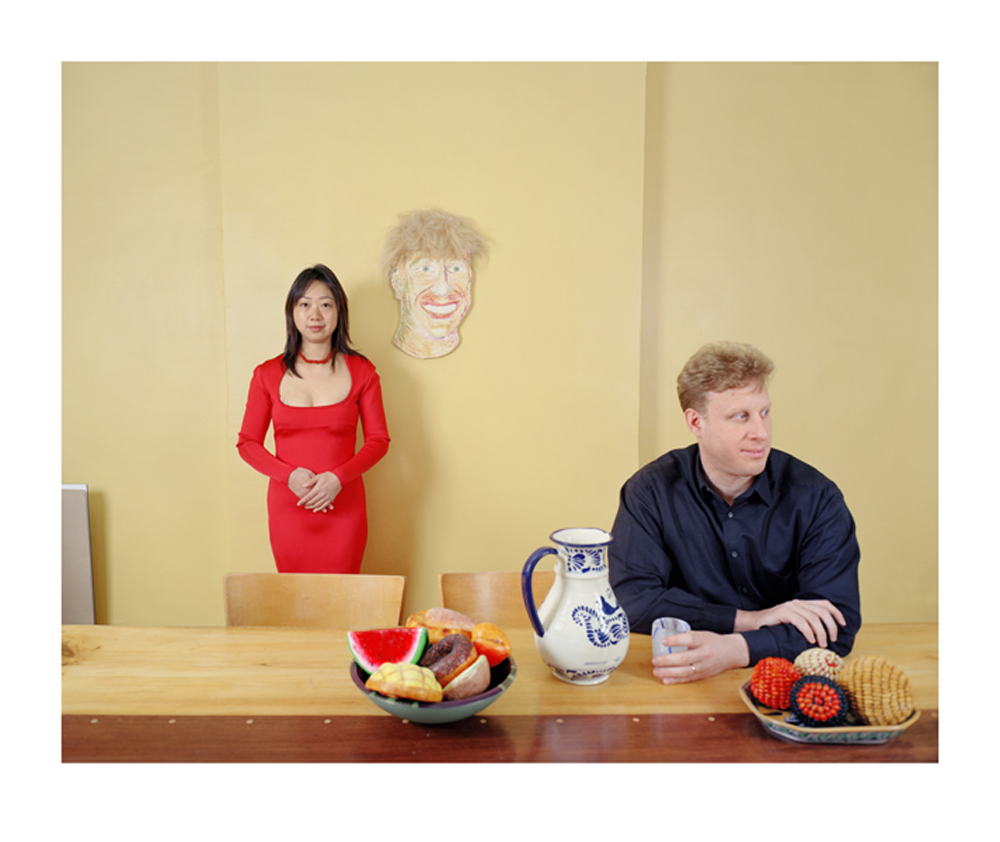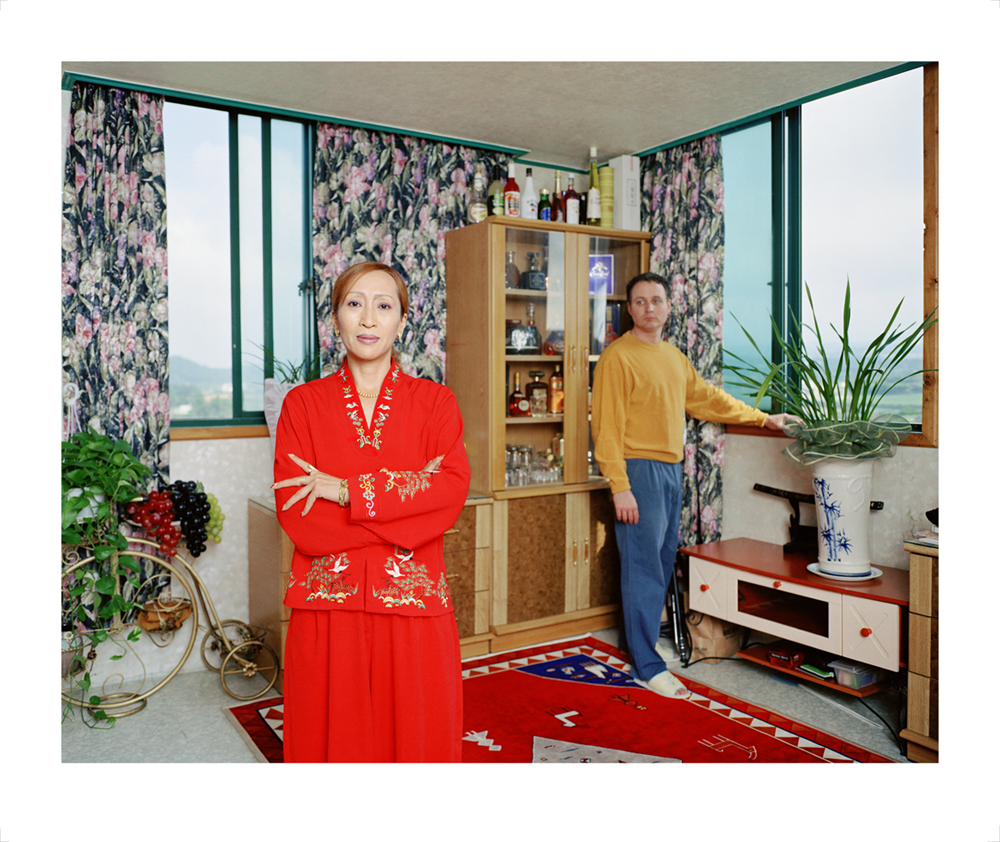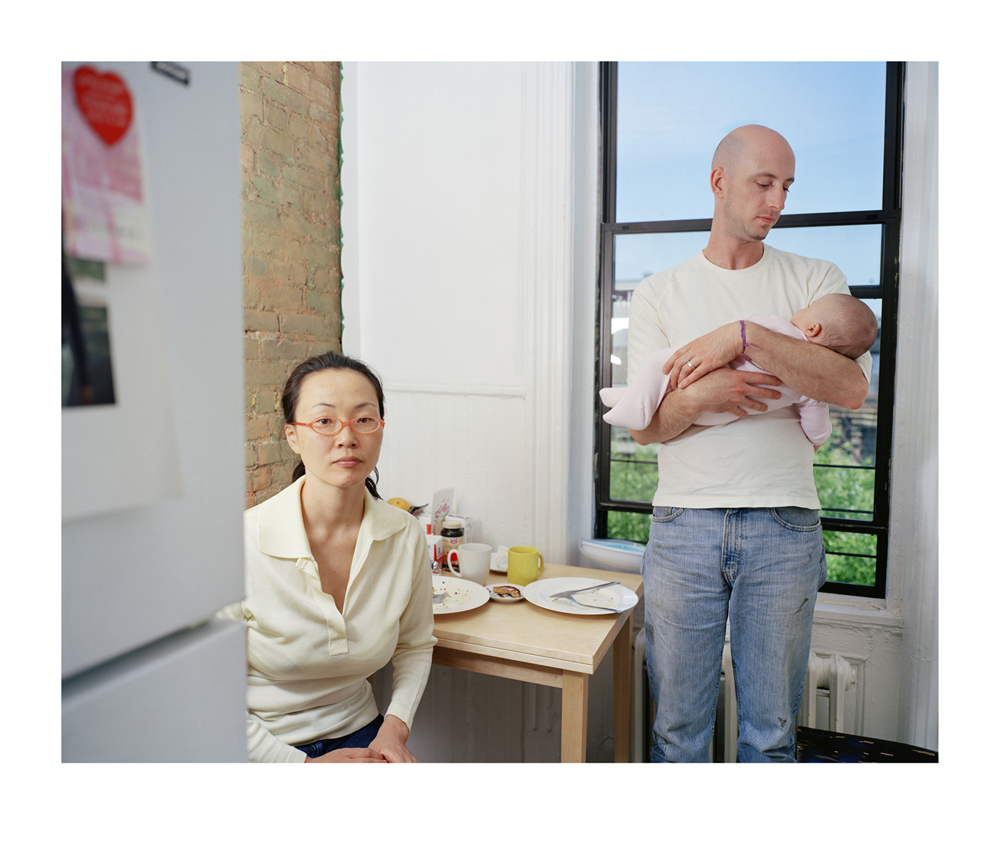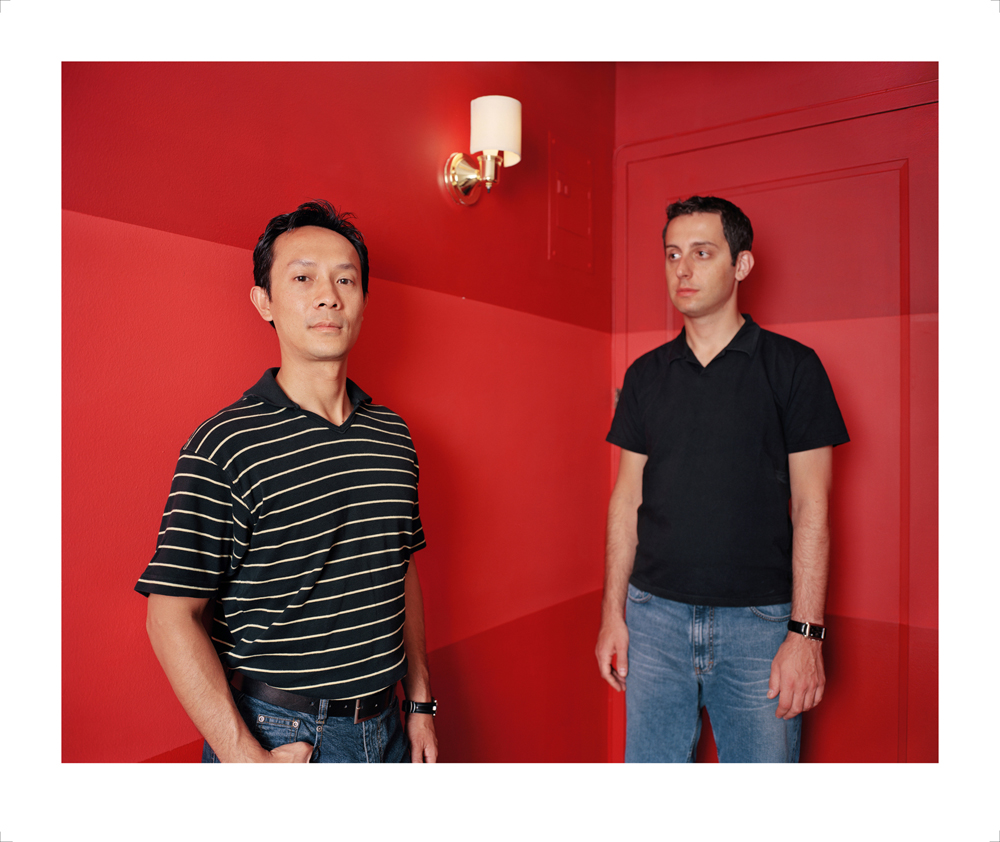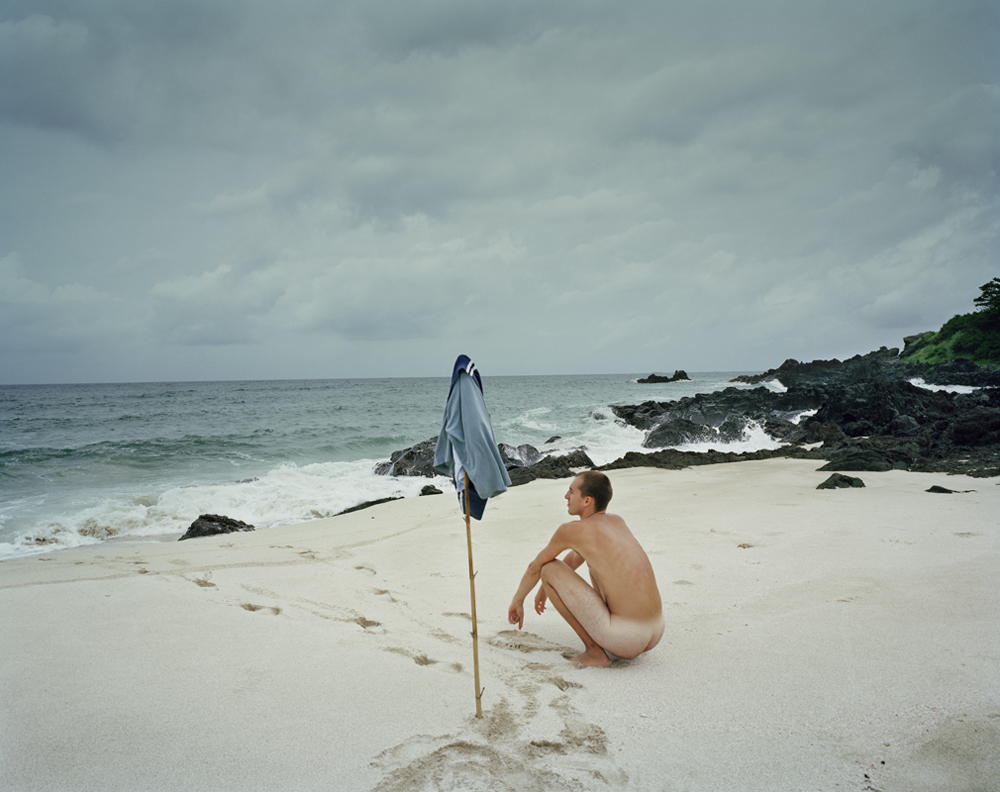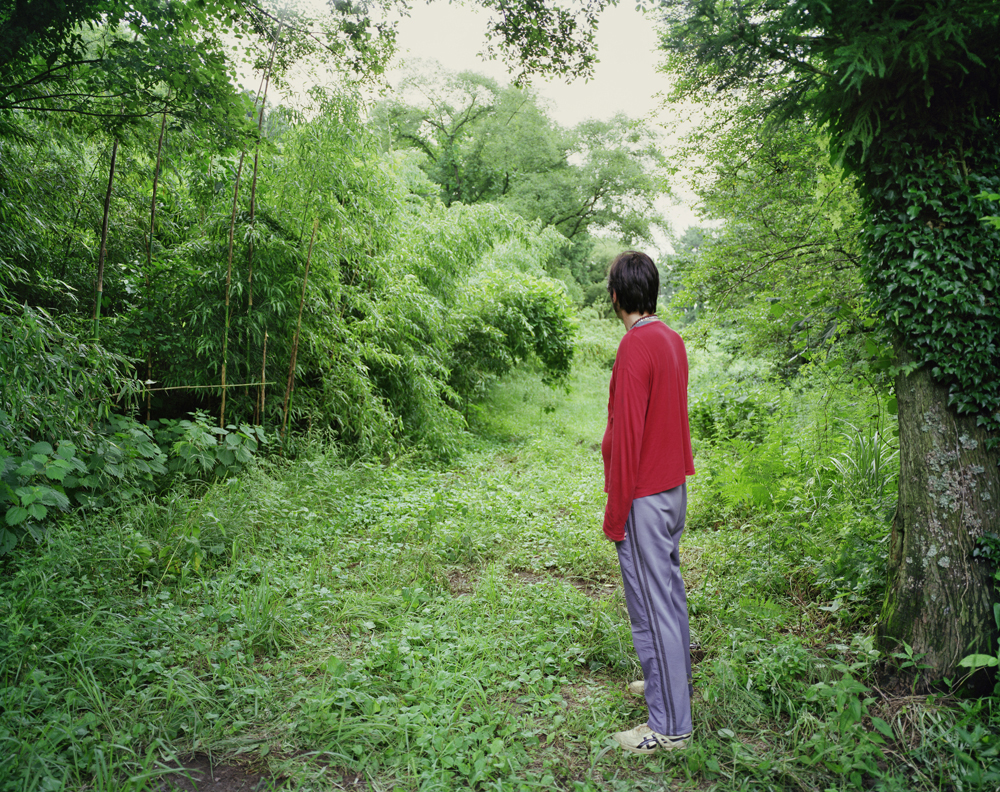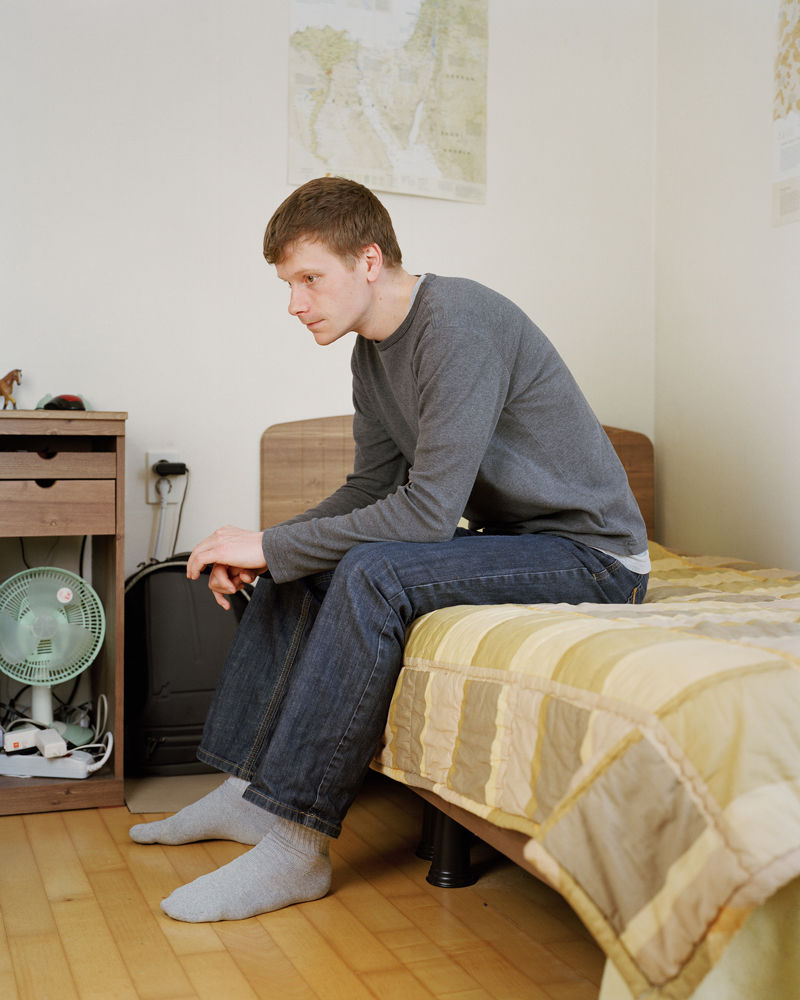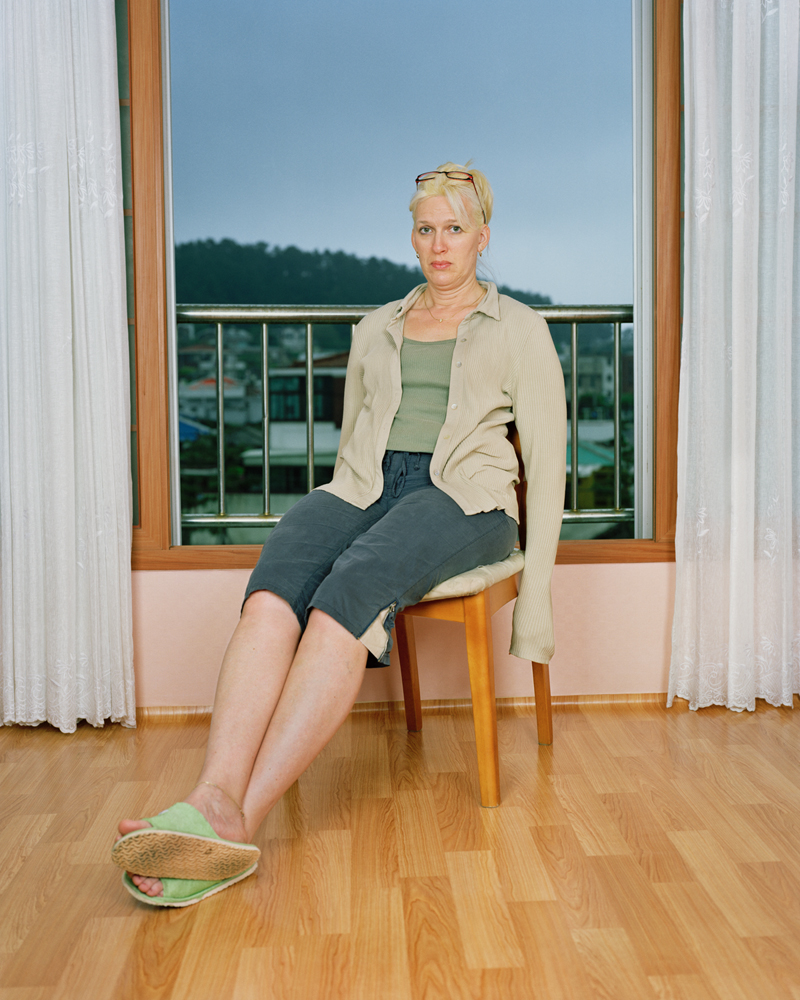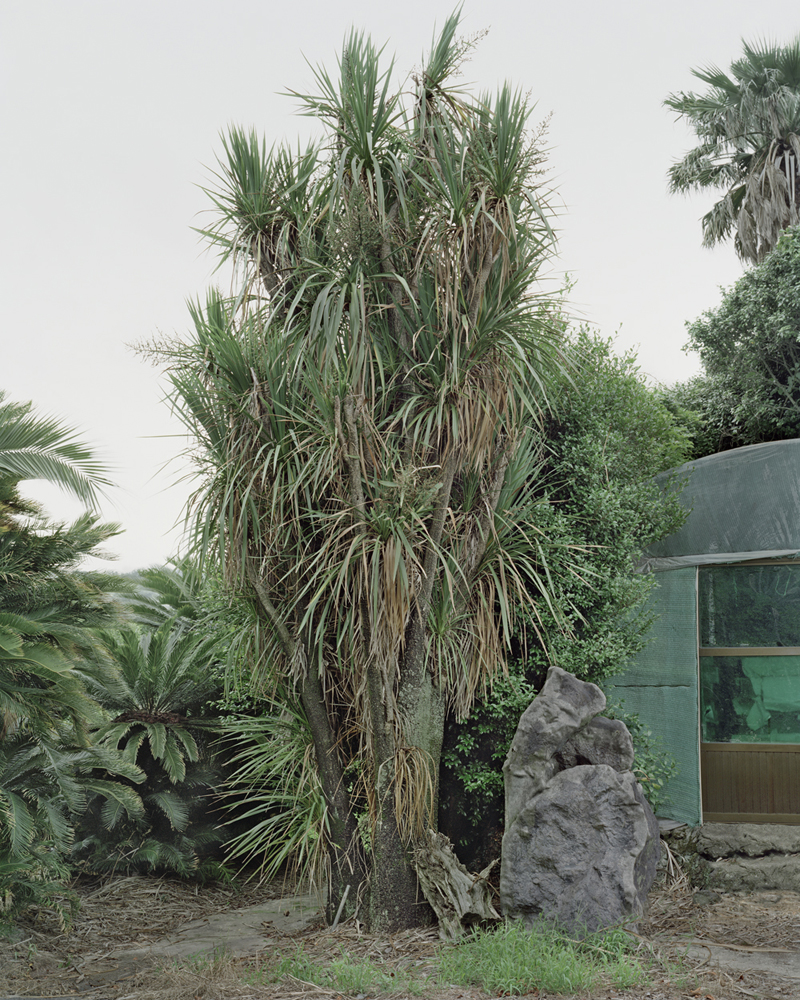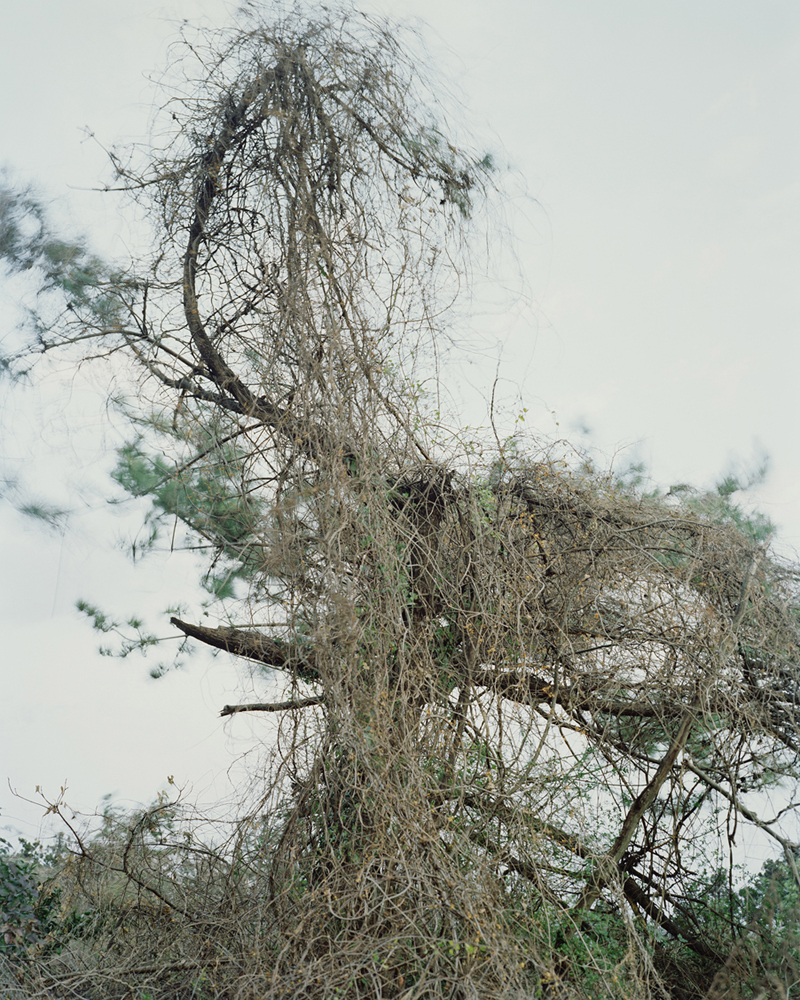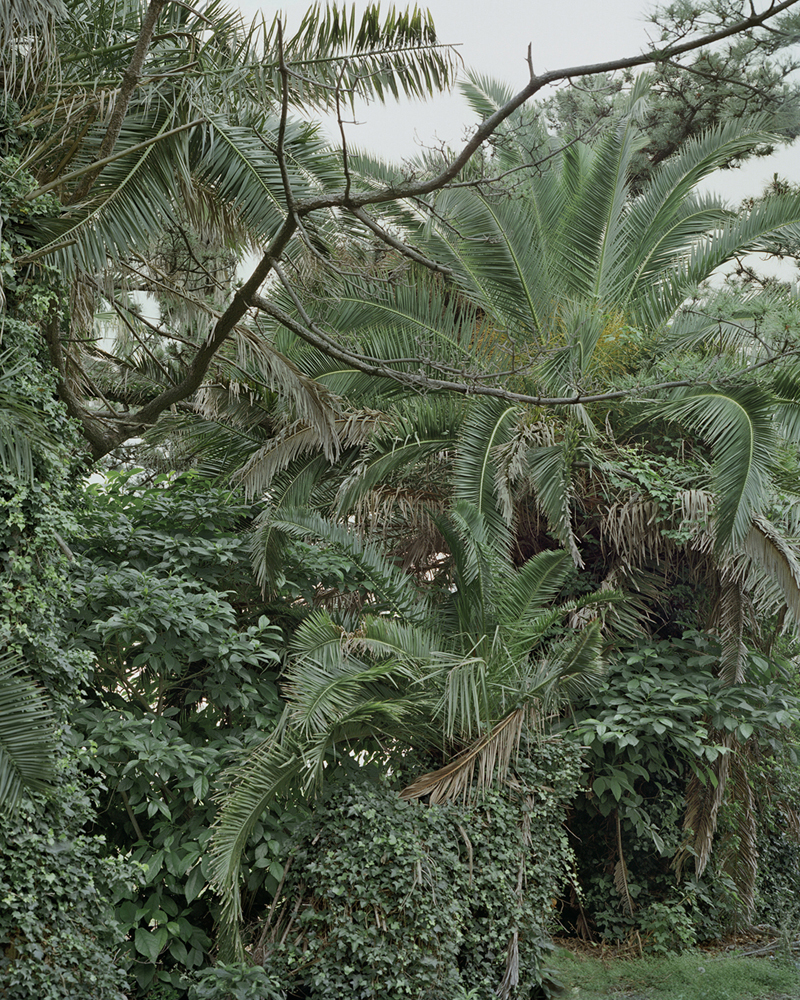South Korea Week: Oksun Kim: The Shining Things
Oksun Kim’s work poses an essential question to us all:
Where is my ship sailing, and where will it settle? Is my ship constantly drifting?
I met Oksun Kim on Jeju Island; a volcanic island located in the southernmost part of Korea.
Kim was born and raised in Seoul. After marrying a German husband, she has been living on Jeju Island for 26 years. While she’s anchored down in the Korean soil, she lives a nomadic lifestyle, ebbing and flowing with the endless sea surrounding the island. Although Kim’s photos stem from a documentary nature, her work contains layers of human stories, and the considered production of her subjects help to make clear light of her nomadic life journey.
Photography, as a medium, does not simply record and reproduce reality. A photograph allows viewers to produce their own unique interpretations of the image that is born out of the visual reality embedded in the photo as well as the reality of the viewer’s life experiences. Hence, her photos push us to question our universal and conventional beliefs. When seen at a glimpse, her images can come off as expressionless, documentary photos; however, her photos come from thorough investigation of reality, and her subjects are intentionally staged.
Kim’s first encounter with photography dates back to her college years. Kim majored in education, and while doing so, she was on a mission to further discover the meaning of her existence. She came across a documentary photography club which helped her do so.
She said that “The camera made me who I am, and as a very ordinary schoolgirl — the camera gave me the courage and freedom to express myself.”
After discovering her identity and freedom through a camera, she went off to study photography in graduate school. This is where she used the medium of photography to uncover her deeper artistic voice and interests within the reality of her social surroundings.
In the 20 years of Oksun Kim’s various works contain a distinct photographic characteristic that is very much her own.
To start, her photos are archival in nature and have the elements of a documentary photography. Kim’s photos often begin with her own personal stories. However, in the image themselves, the artist’s emotions are thoroughly excluded, and are portrayed as concise and dry. Despite the fact that her photos are highly directed and staged, she captures her subjects in a straight and linear fashion, which builds on her artistic consciousness and awareness of the world as an archive.
In terms of the subject matter in Kim’s photos, they can essentially be described as a “self-portrait.” The self-portraits contain a myriad of emotions that emerge from the struggles of an interracial marriage and life, such as Korean women being married to foreigners or Korean women living abroad. Kim considered herself to be living an ordinary Korean life until she married her German husband. Afterwards she experienced a handful of societal issues that weren’t apparent to her before. Those ranged from the legal and cultural inequalities in Korean society, severe gender discrimination, and a sense of alienation as a minority in her own country. Building on these personal issues she’s dealt with throughout her life, she further expanded her focus area to issues around LGBTQ relationships, gender and identity, and the lives of foreigners living in Korea. Further, these added societal and cultural topics are often combined with her personal struggles of native vs. foreign boundary-setting in her work.
Oksun Kim’s major works — (2002-05), <Hamel’s boat>(2008), (2011), (2012-2014) — are reflections of her personal struggles ranging from an interracial marriage, cross-cultural life and the chaos of discovering her own identity, to the nomadic life of constant wandering and difficulty in settling down in one place.
Oksun Kim’s photography career began in 1996 with the work titled <Woman in a Room> that was created during her time as a master’s student. The work contained women, staged in familiar, yet private spaces such as their living and bedrooms. The subjects all have confident gazes, which reveals a lot about the internal compass of the artist herself.
In 2002, <Happy Together> was released and it made light of the deeply entrenched perspectives around social inequality and discrimination toward interracial marriages. In addition, the series shows those who are marginalized through the constraints and suppression created by human-made, societal standards.
Happy Together 2002
Oksun Kim’s photography career began in 1996 with the work titled that was created during her time as a master’s student. The work contained women, staged in familiar, yet private spaces such as their living and bedrooms. The subjects all have confident gazes, which reveals a lot about the internal compass of the artist herself.
In 2002, was released and it made light of the deeply entrenched perspectives around social inequality and discrimination toward interracial marriages. In addition, the series shows those who are marginalized through the constraints and suppression created by human-made, societal standards.
Hamel’s boat 2007
Next is Oksun Kim’s <Hamel’s boat> photo series from 2007 which was a critical piece that questioned the very existence and identity of both her and her German husband. Before analyzing her piece, I’d like to introduce the historical background of the name Hamel.
In 1630, Hendrick Hamel, a Dutchman, was on his way to Japan on a ship which belonged to the East India Alliance. On his journey over, he encountered a storm and drifted to Jeju Island. He was unintentionally forced to settle in Korea and struggled by engaging in hard labor. After some time, he managed to escape to Japan and eventually returned to the Netherlands, his home country. There, he published a travelogue called <Hamel’s Drifting>. This publication turned out to be one of the first-known documentations that detailed Korea’s geography, customs, politics, military and education to Europe.
While Hamel was forced to reside in Jeju due to a storm, many foreigners today follow his footsteps and wander the island of Jeju for various other purposes. Kim directly expresses these contemporary phenomena through photography.
The subjects in the <Hamel’s boat> series includes her husband, and they are all foreigners living in Jeju Island with different occupations. They range from musicians, English teachers, painters, tour guides and environmentalists. Her husband, Ralph, is a German instructor and skin scuba instructor. Ralph and Oksun’s physical lives are constantly in motion rather than being settled; they lead a modern nomadic life. Although, 350 years old, Hamel drifted to Jeju Island not by his own will, it is believed that the foreigners currently residing in Jeju island have deliberately chosen to live a life that borders “the boundary between settlement and movement” to escape their daily lives and to find their own sense of freedom.
Hence, Jeju Island was a place that helped fulfill their motives and purpose. The attitude of foreigners living in Jeju, chosen by their own will, can equally be applied to our own lives. The will of all human beings longing for new possibilities and freedom is universal. The way of life of all modern people crosses the boundaries of “settlement and drift” and “alien and indigenous people” through globalization.
The meaning of “boat” in Oksun Kim’s title, contains multilayers of meanings. For Hamel, 350 years ago, the “boat” was the only means of escape from captivity and from his life of hard labor. It was also the vessel that helped him find his way back home. For modern-day foreigners living in Jeju, the “boat” is no longer a means of transportation. In this respect, OKsun Kim’s “boat” has a symbolic meaning for those who lead a life of wandering in search of freedom and hope in an unknown space.
Ultimately, the subjects in Kim’s Hamel’s boat photo series are a reflection of ourselves: in pursuit of true freedom and of longing to escape from the problems that arise in our own lives.
No Direction Home 2011
Foreigners who appeared in Hamel’s boat had the background of Jeju Island’s nature scenery. On the other hand, draws attention to the residences of the foreigners living in Jeju. The homes, however, have a strange appearance to them.
While the interior appears to be a pretty typical and ordinary Korean home, the photographs of this series bring about an odd feeling. This is probably due to the fact that the images show the life of an unsettled foreigner, similar to ones of nomadic people who seem to always be prepared to leave.
However, I ask, does this life and feeling of unsettlement only apply to strangers and souls living outside of their hometown? Using her own self-portraits as well as of other foreigners residing in Jeju, artist Kim explores her own identity by shedding light on societal prejudices and cultural boundaries. Furthermore, these societal pressures and struggles are persistent in all of our lives. We, as humans, are only settled where we are in the present moment. This series makes us realize how humans are constantly tethering between a life of settling and drifting.
The Shining Things 2014
Dating back to Kim’s graduate school years, the main subject of Kim’s photography focused on people. Through photography, Kim has been on a quest to investigate the ontological meaning of social and cultural groups, including the positioning of the artist herself. The photos in are images of a tree that are shaped in the form of the human physical form. The photos have a fascinating and amusing perspective to them.
Jeju Island is located at the southernmost tip of Korea; it’s a very special place for Koreans. Jeju is a volcanic island consisting of a warm, oceanic climate and is universally seen as a visually beautiful place, boding of an exotic atmosphere. The island is famous for its unique stones, wind flow, and female divers (hae-nyeos). In order to create an exotic landscape, the natives of the island in 1980 started to plant Washingtonia palm trees, which now cover the streets of the island.
The subject of this series is trees, and within them, Kim embedded a deeper layer of meaning into their existence. Her intentions were to depict the fixed notions and boundaries of social and cultural identities placed on foreigners, interracial couples and marriages, and the drifting nature of strangers into the confined frames of a photograph. The trees in Kim’s photos are meant to symbolize those who are marginalized and alienated from society. These are the beings that will either be thrown away due to their weird shapes or will soon be dug up and discarded.
The palm trees that were replanted many years ago must have struggled through a long period of growth and turmoil, given that they were not accustomed to the soil and climate of their original roots. As subtropical trees, the palm trees we see in Jeju now were moved for political purposes by human beings and had to endure a life of deep-rooted change, similar to the figures found in Kim’s The Shining Things series.
Further, the transformed appearance of the exotic palm tree in Jeju is the artist herself and is considered to be the image of foreigners drifting in Jeju. In this series, Kim takes the symbolic subject of her images — humans — and portrays them as trees, and by doing so, she shies away her emotions and stories. The viewer is then met with an obscure understanding of the artist’s intentions and is challenged to ask the ontological question of photography. In this respect, the concept of this series makes us ponder the very aesthetics of modern photography.
Happy Together
2002 -2005
“Borderless love, people call my marriage like this.
Happy Together began with the question of “marriage.” I feel like that I am just awakened from the long sleep of 9 years of my marriage. Do the differences of international marriage come from different cultures? Or is this due to some kinds of individual characteristics? I decided to get some answers for these questions by viewing thorough the lives of other couples.”
As I understand, is a work that deals with the experience of an Asian woman married to a Caucasian man. I’d love to hear more about your inspiration and motives for creating this series.
I considered myself to be a very ordinary Korean woman, who was born, educated, and raised in Seoul. Unexpectedly my life took a big turn after I ended up marrying a German man. After our marriage, my husband and I settled down in Jeju Island, and from there, we experienced Korean society’s heavy discrimination towards us, as an interracial couple. Given this painful experience, I started to take interest in other similar societal and cultural issues and inequalities. With photography, I wanted to showcase these various issues and took photography as a way to amplify my voice.
What were you intending to convey in the “Happy Together” series?
I wanted to show the difficulties of being married to a foreign man at a time when the law discriminated against interracial couples over homogenous, Korean couples. For example, it was very challenging for my husband and children to obtain Korean citizenship. While these inequalities have disappeared, the past (that I experienced) was filled with social and cultural prejudice against non-Koreans and mixed-ethnicity marriages.
I noticed in Happy Together that the gaze of your characters is very intentional. What was your intention for this?
Yes, that’s correct. In this series, I intentionally directed the gaze of the Asian women to stare straight into the camera with a rigid look, while the Western husbands’ gazes were to point indifferently without any clear direction. Beyond the differences in Western and Eastern cultures and customs, I wanted to pose a more general question about the choices of married couples, and of my own marriage. That is, is this marriage really happy? I make commentary about the lives of Western men who have settled in as spouses in an unfamiliar land. I depict the subtleties of the foreign men’s psychological conflict as it relates to their alienated existence submerged in a constantly drifting, disconnected life. Subsequently, the couples in this work are in the same space but looking at different places. This was intended to express the different gazes that are born from cultural differences and perspectives. The intense directness of the women’s gaze into the camera was my way of manifesting that the societal walls and discrimination toward women would be broken down.
Ultimately seems to be your own story depicted through others’ who have faced similar life struggles as you. How have you changed throughout the completion of this work?
Happy Together was a series I endeavored upon to understand and make light of cultural differences by capturing the expressions of daily relationships, differences and conflicts in interracial marriages and couples. Through that process, I certainly grew and overcame a lot of my own internal conflicts.
In Korea today, there are very few preconceived notions or biases against foreigners, and many are living here. However, in the past, there were not as many foreigners and interracial couples who immigrated to Korea. Did you have any difficulties finding subjects for your photos?
As my husband and I were an interracial couple, we were able to integrate easily into the international community in Korea. And to that point, I didn’t struggle to find people like us. The interracial couple’s community in Korea leaned on each other to share similar experiences and hardships that were put on us by the society at the time. As we built this strong sense of belonging and understanding, people were generally open to be part of my work.
Hamel’s Boat
2008
“A serial work, “Hamel’s Boat,” is set in the favorite spots of the foreign settlers living in Jeju Island. The beginning of this work is from a person whose name is Hendrick Hamel. Hamel is the first westerner who was ship-wrecked in Korea for living 13 years about 350 years ago, and later introduced Korea to the Western world. For Hamel, “ship” would be the symbol of the hope to be back to their own hometown, and it could be also a way to move people to the dreaming world. To the people who are dreaming of an unknown land, Jeju Island is not at all an unfriendly land. It is another hometown, and at the same time, to the people who never wants to belong to anywhere, Jeju is the symbol of freedom.”
The “Hamel’s boat series” seems to be about the lives of foreigners who are living in Jeju. How did you transition your curiosity from exploring interracial couples to foreigners living Korea?
My husband is German, and he had many interactions with other foreigners living in Jeju, which naturally led me to become more interested in their community.
For the foreigners living in Jeju, what kind of jobs did they have and what were the various reasons they chose to live there?
There was a great diversity of jobs, ranging from English teachers, environmental activists, scuba instructors, to artists, musicians, and tour guides.
While Hamel, a historical figure, was forced into Jeju by a storm and had great trouble returning to his hometown, foreigners at Jeju today have come out of their own will to explore and enjoy a new sense of freedom from their original roots. It’s an interesting point in that respect. Jeju is a place of escape for these foreigners, and they’ve chosen to settle there to discover their inner freedom.
While they are escaping for freedom, there is a bit of an irony here in that they are also trapped in constant wandering and anxiety around having to leave at any moment.
Unlike other series of films that were mainly shot inside, “Hamel’s boat” shows the daily life of foreigners out in Jeju’s nature. What was the reasoning behind this background choice?
Jeju reminds me of a time when I was in serious psychological pain such as isolation and exclusion, even though I was a Korean living in my own home country. On the other hand, for foreigners who came to Jeju, it was a place of escape from reality to lead a free life. Most of the four seasons in Jeju are damp and cloudy. Portraying this weather palette of Jeju was a symbolic measure to show the hardship and loneliness of strangers living in Jeju, a place that they conceptualized as freedom, but in reality, it was filled with a constant uncertainty around where their true home existed.
One last question. What is your definition of a good artist?
A good artist is one that tells their story in the most truthful way they can. By doing so, people will seamlessly resonate with the genuine spirit of the work. An artist’s ability to bring out his or her deepest vulnerabilities and tell their story in the purest, intimate form is one of the most courageous acts that qualifies an artist as a great one.
Critics:
“OKsun Kim’s previous photographs on the strangers feature all types of aliens with a status of visitor, temporary or permanent resident who are internationally married couple, gay couple, English teacher, businessman, travel agent, yoga instructor and more. Happy Together (2002) is the first result of this project, a series on couples composed of a Caucasian husband and an Asian wife. It was interesting because of its unconventional way of shifting the focus towards the audience. The Asian woman in the photograph gazes squarely at the audience. In the scenes where she/they reveal(s) a moment from everyday life with her/their husband(s), she/they observe(s) the audience. Through these scenes that are normal to the photographed person but that may cause a sensual repulsion from those with confined views, these women seem to question “how is this life any different from yours?” At this point the eyes of the audience biased with curiosity, snooping, fantasy and prejudice experience a kind of sensual rupture. The details of the scenes are each condensed through delicately captured moments and perfectly contained to cause chaos to the audience. The spaces enhanced by the details unique to the international families and the world of fusion covers the viewer’s eyes and rattle them. Thus, the images lead the audience to voluntarily restructure their views and senses and force them to accept such integrated life and living to acquire an open-minded view that expands together. If so, aren’t those who hold the senses and views of fear based on exclusion (against the strangers) nurtured by nationalism, ethnicism, and patriarchy the most appropriate audience for these photographs? “
Lee Youngwook, art critic
Oksun Kim has spent the last 26 years of her life photographing women, transnational couples, foreign residents and vegetations living in Jeju Island. Kim’s work is marked by the aimless gaze which is juxtaposed with the vision directed at the subject. She powerfully captures the nuanced situations and details. The mixed world in her photographs urges the viewer to reorganize one’s perspective and senses to open up and to embrace life that is full of diversity.
She has a Ph.D. in photography at the Graduate School, Hongik University. She has been featured at MMCA, Leeum, SeMA in Korea and in overseas art museums in Chelsea, Houston, Santa Barbara, Tokyo, Taiwan, Hong Kong, Buenos Aires and Santiago, including MoMA PS1. Kim has been awarded the Dong Gang International Photography Award, Ilwoo Photography Prize, Daum Artists Award, and her published collections of photography include Jeju Island (Hatje Cantz), The Museum of Innocence, The Shining Things, No Direction Home, Hamel’s Boat and Happy Together.
Sunjoo Lee is a mixed media photographer based in Seoul, South Korea.
Lee’s extraordinary artistic sensibility that was once portrayed through her voice is now visible through the works portrayed through her camera lens. Her photography focuses on a unique lyrical journey into her personal life. She explores her past, present, and future world in a temporal and spatial perspective.
She received a BA in Music from Ewha Women University, a second BA in Photography from Chung-Ang University(Academic credit bank system), and an MFA in Plastic Art & Photography from Chung-Ang University Graduate School of Photography in Seoul, Korea. In 2019, she was awarded into the 11th cohort for the prestigious artist residency program at the Youngeun Museum of Contemporary Art. Through this residency, she’s currently working on her upcoming series.
Lee’s acclaimed works have been exhibited widely throughout the years in South Korea. Most recently, she had her solo exhibition at the Youngeun Museum of Contemporary art, Gwangju Korea. She’s also showcased at Gallery Now, Gallery Gong, Gallery Guha, and more in Seoul, South Korea. Her works are permanently displayed at the Haslla Arts Museum (Gangneung, Korea), and YoungWol Y. Park (Youngwol, Korea).
Her work at large, incorporates everyday objects and subjects to make visual sense of the complexities of human emotions and feelings derived from the intangible, such as music. Her photographic inspiration stems from her experiences of living and travelling abroad. She extracts the memories and various emotions born out of the human connections she’s made during that time of being in foreign spaces.
Building on this conceptual narrative, her work has landed her multiple recognitions, from the 2019 Critical Mass as a top 200 Finalist (USA) to the 1st Place Richards’ Family Trust Award during the 25th juried show at the Griffin Museum of Photography (Winchester, USA). In Korea, She received a growing up artist award at the Dong Gang International Photo Festival and Now and New Exhibition award at Gallery Now in Seoul Korea.
Posts on Lenscratch may not be reproduced without the permission of the Lenscratch staff and the photographer.
Recommended
-
Salua Ares: Absense as FormNovember 29th, 2025
-
Ricardo Miguel Hernández: When the memory turns to dust and Beyond PainNovember 28th, 2025
-
Pamela Landau Connolly: Columbus DriveNovember 26th, 2025
-
KELIY ANDERSON-STALEY: Wilderness No longer at the Edge of ThingsNovember 19th, 2025
-
Jackie Mulder: Thought TrailsNovember 18th, 2025


